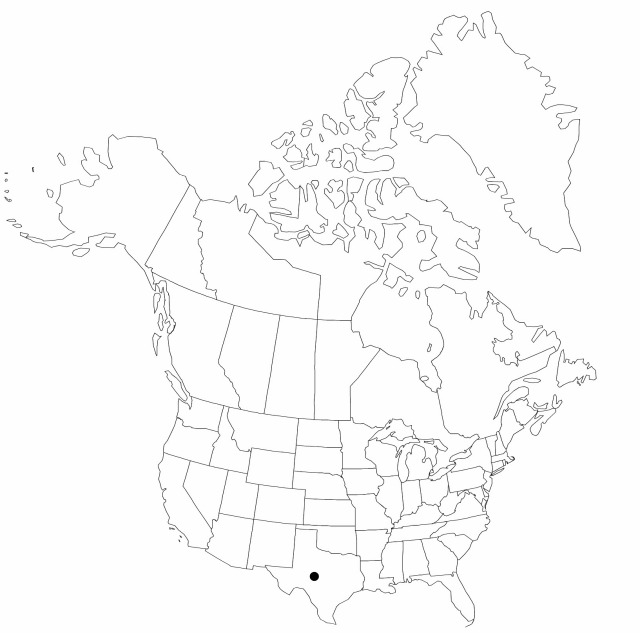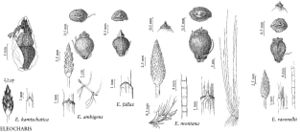Difference between revisions of "Eleocharis ravenelii"
in J. K. Small, Fl. S.E. U.S., 184, 1327. 1903.
FNA>Volume Importer |
FNA>Volume Importer |
||
| Line 51: | Line 51: | ||
|publication year=1903 | |publication year=1903 | ||
|special status= | |special status= | ||
| − | |source xml=https://jpend@bitbucket.org/aafc-mbb/fna-data-curation.git/src/ | + | |source xml=https://jpend@bitbucket.org/aafc-mbb/fna-data-curation.git/src/f6b125a955440c0872999024f038d74684f65921/coarse_grained_fna_xml/V23/V23_106.xml |
|genus=Eleocharis | |genus=Eleocharis | ||
|subgenus=Eleocharis subg. Eleocharis | |subgenus=Eleocharis subg. Eleocharis | ||
Revision as of 19:06, 24 September 2019
Plants perennial, densely tufted; rhizomes mostly hidden by aerial shoots and roots, not long, 2–3 mm thick, hard, cortex persistent?, internodes very short, scales persistent, 4–7 mm, membranous, slightly fibrous. Culms terete, when dry with to 12 blunt ribs, 20–55 cm × 0.5–1.1 mm, soft to firm, internally mostly hollow with complete transverse septa 2–4 mm apart, evident only on sectioning culm. Leaves: distal leaf sheaths persistent, not splitting, proximally dark red, distally stramineous or reddish, thinly papery, apex often red to brown, obtuse to subtruncate, slightly callose, tooth present, 0.5–1(–3.7) mm. Spikelets lanceoloid, 5–13 × 2–2.5 mm, apex acute to obtuse; proximal scale amplexicaulous, entire; subproximal scale empty; floral scales appressed in fruit, 10–100, 10–12 per mm of rachilla, medium brown to stramineous, midrib regions often greenish, ovate, 1–1.5 × 1 mm, entire, apex rounded to subacute, carinate in distal part of spikelet. Flowers: perianth bristles 5–6, pale brown, stout, equaling achene; stamens 3; anthers brown, 0.4–0.9 mm; styles 3-fid or a few 2-fid in the same spikelet. Achenes falling with scales, green or medium or dark brown, obpyriform, compressed-trigonous or some biconvex in same spikelet, angles prominent, 0.6–0.8 × 0.5–0.6 mm, neck short or absent, smooth or very finely reticulate at 20–30X. Tubercles brown, depressed-pyramidal, 0.1–0.2 × 0.2–0.3 mm.
Phenology: Fruiting spring–fall.
Habitat: Fresh, wet to damp, seasonally wet depressions, flatwoods, ditches
Elevation: 0–200 m
Distribution

Tex., Mexico (San Luis Potosí).
Discussion
Of conservation concern.
Eleocharis ravenelii is apparently very uncommon in North America. It is often mistaken for very slender-stemmed E. montana, which differs in its spikelets with floral scales 1.5 mm or more, 100–500 per spikelet and 15–40 per mm of rachilla, its mostly larger and biconvex achenes, and its culm septa usually evident without sectioning the culm. Although the holotype of E. ravenelii (NY), from Corpus Christi, Texas, lacks culm bases and leaf sheaths, its culms, spikelets, floral scales, and achenes are typical of the later E. austrotexana M. C. Johnston.
Selected References
None.
